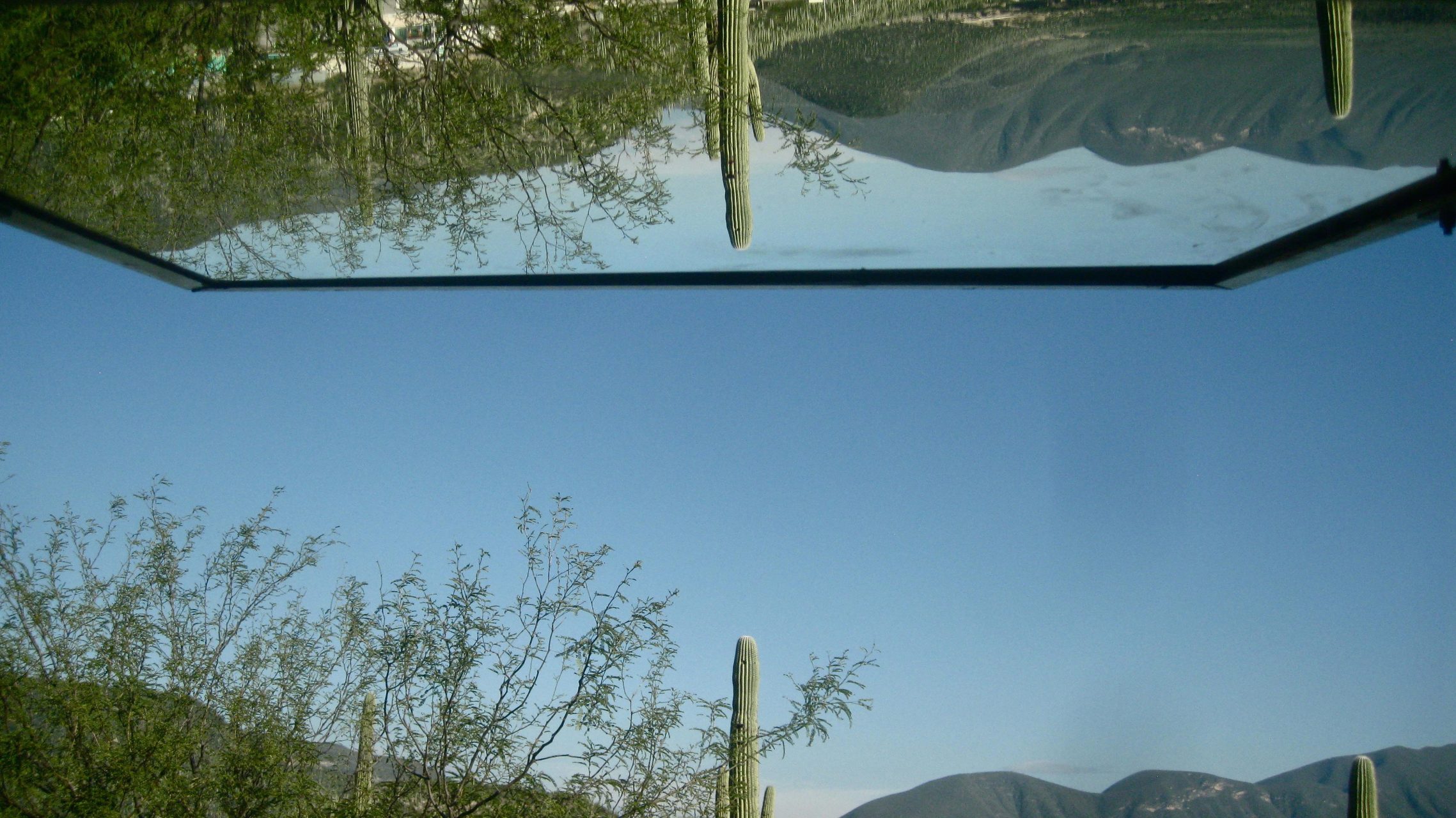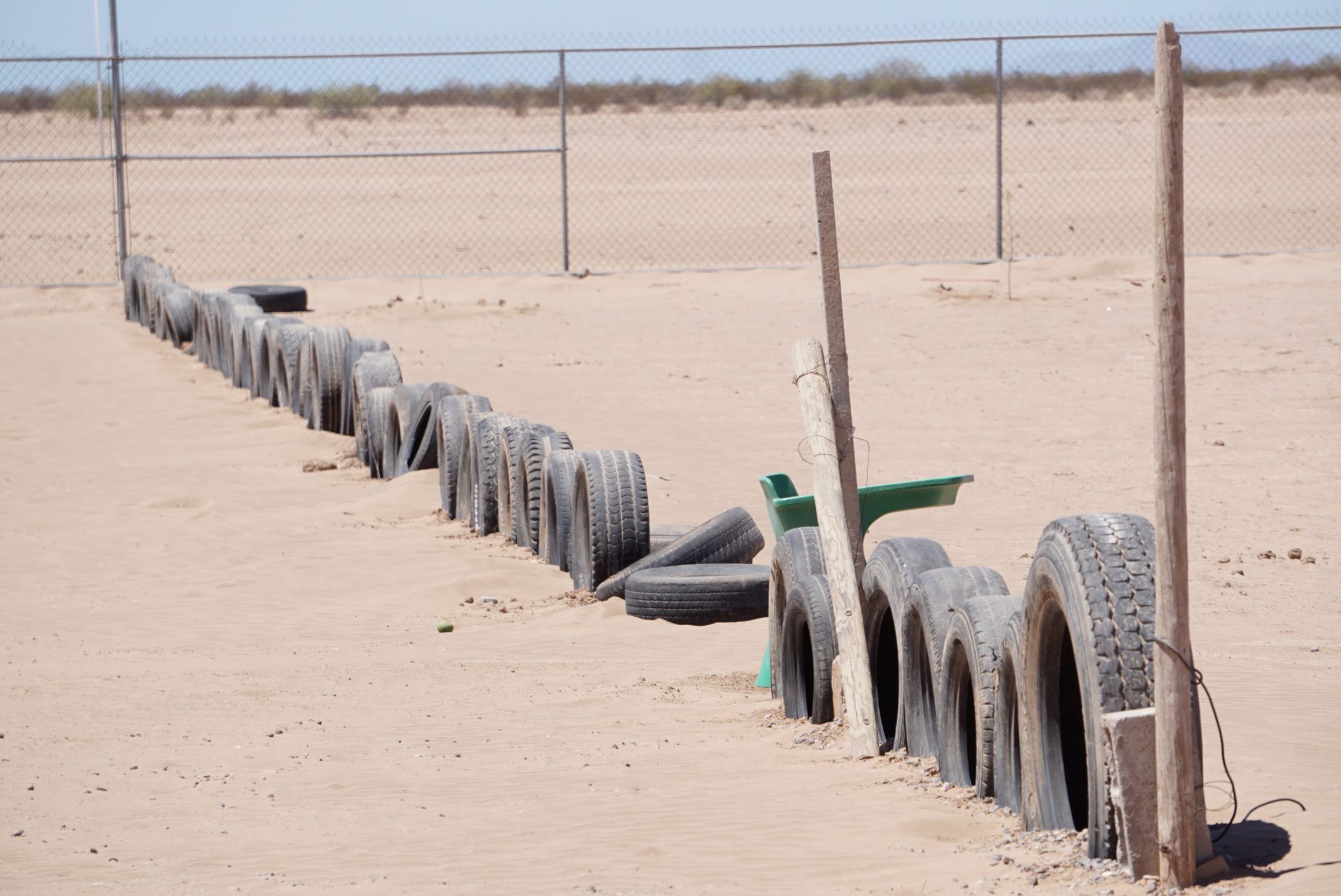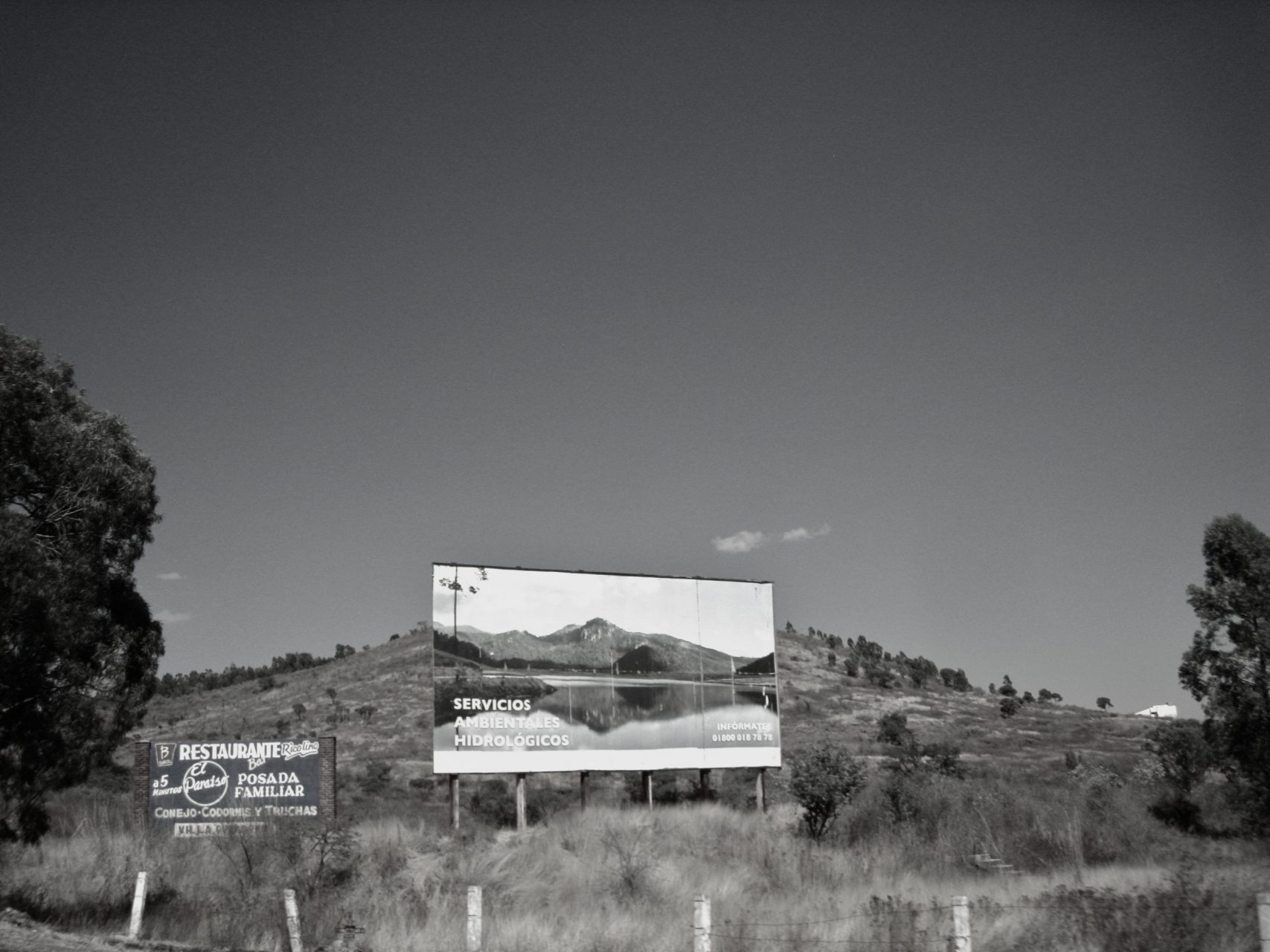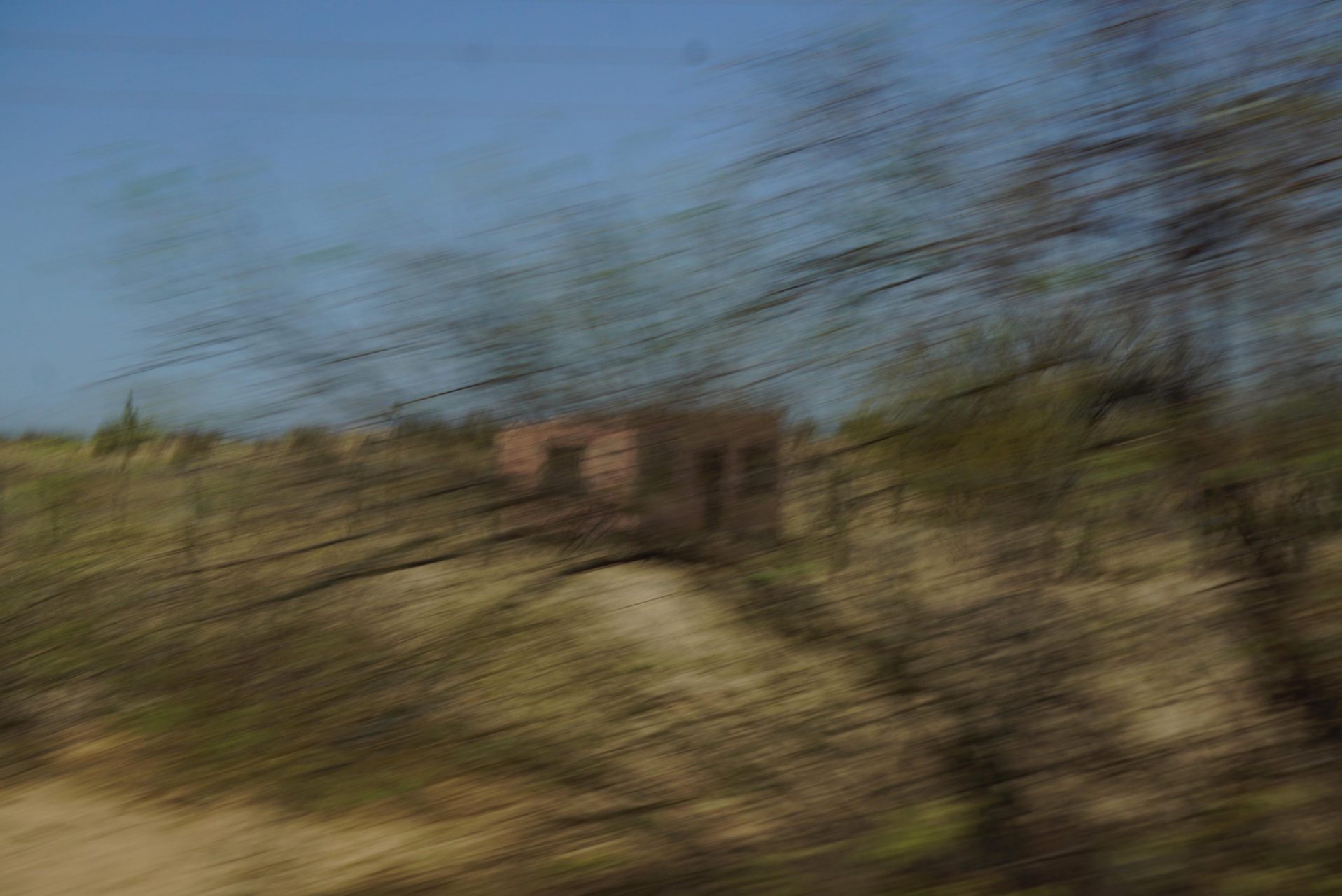In dialogue with work In This Place by the artist Alexandra Majerus
video : In this place, Alexandra Majerus, 2020
Turners Hall Wood, Barbados, is a forested gully system of approximately 50 acres (0.2 km2) that contains the island’s only remaining precolonial vegetation. The small area underscores the island’s history of violence, of slavery, and of razing the land for sugar cane plantations within Great Britain’s larger project of the colonization of land and people. Images of Turners Hall Woods complicate the stereotypical imagery of beaches and notion of Caribbean paradise created through tourism. Layering four different perspectives of the same place, storytelling and narrative become a tool for agency as Caribbean people negotiate their subjectivity and live in the everyday in between the weight of history and the powerful discourse of tourism.
The mirror is a utopia because it is a place without a place.
In the mirror, I see myself where I am not, in an unreal space
that opens virtually behind the surface, I am there, there where I am not,
a kind of shadow that gives me back my own visibility,
that allows me to look at myself there where I am absent:
utopia of the mirror.
Michel Foucault[1]
There is a level of reality that is neither apprehensible, traceable, nor measurable by the instruments of objective knowledge. Of that level, we only have notions—knowledge that leans more on the intuitive, experience on a personal, existential scale that is difficult to translate or transmit to others.
There are theories that claim that the universe was born from sound, but the world in the mirror is mute, deaf. The space of the mirror has no sound because it has no depth, and because it is nothing more than an allusion, a projection.
The mirror reflects the space that happens to us—its subjectivity, its heterogeneity. Architecture, like the mirror, is a reflection, a revelation of what we are, as society and culture. As a language, it is constitutive and constituent of our socio-spatial reality. It is also a means for its transformation. Space is neither only visual nor only physical—everything that we imagine and that does not exist physically has a location, even if it is not tangible.
If the imaginary that perceives space changes, the idea from which space is valued changes as well, therefore its perception and the way in which it is inhabited. Nothing has meaning by itself—all meanings are constructions in the imaginary. Every sense represents, in these terms, a creation, just as every construction represents the emergence of a new world.
Not only spaces but also places are built—the habitat where the social aspect of the human being develops. Architecture, understood as the built habitat of human beings, is the space in which society develops, and the design of this space will contribute and respond to the intentions and needs of the society that demands it. All architecture, in this sense, is also political, and shows that the delimitations of a particular space are mere conventions, as would be the delimitations of any concept or word.
Etymological comparison of the words “amusement” and “investment” in Spanish (“diversion” and “inversion”), externalizes the depth of their meanings, which, in capitalist terms, reveals them as opposites. Both come from Latin and share the verb “vertere” (to turn, to turn around, to pour). What changes is the prefix, ‘in” (inward or over) versus “di” (divergence, in the opposite direction, turning away), so that, given the systematic purpose of accumulating energy for capital, an amusing activity poses an oppositional stance. Diversion is a deviation, a version-other—it poses a turn in activity/circumstance, the possibility of escaping from routine or of seeing, in that same activity, a different/creative perspective in its meaning. Fun has the quality of making of a dull activity an engaging or exciting one.

What would space need in order to become fun, what would it take to make it fun? Is it the space that provides amusement, or is it the inhabitants? To achieve a fun space, must it have devices/artifacts that entertain, or perhaps simply allusions that promote/induce/suggest it? Are the social qualities of the space imaginary constructions?
The amusement/theme park is an enclosure/area organized around a storyline that serves as an attraction. The topic is represented/staged by recreating environments, events, and characters within the proposal of a parallel reality, a game/fiction that has the purpose of entertaining an audience. It is built/manufactured ex profeso, unlike a tourist site, whose attraction stems from its intrinsic qualities, such as its cultural richness, geography, gastronomy, history, architecture, etc.
These places have something in common—they are spaces for entertainment and leisure. In a society governed by the economic values of a system of production and consumption, the role that such a place can play is interesting. Leisure could be considered a deviation—a distortion, a misdirection, an estrangement, a derivation. Leisure is time off from work. It could be an authentic opponent of the dominant system. However, as the system’s nature is to make people produce and accumulate capital, the system itself creates a strategy in its favor so that whoever indulges himself or herself in leisure pays for it, and does not stop producing capital, which occurs through the consumption of entertainment and amusement services.
Theme parks are not only simulation spaces, but mirror spaces. Whoever gets in has the commitment to have fun and achieve, in the simulation experience, real and tangible enjoyment. It is a space in which you have to forget all other spaces. It subdues its visitors to the instantaneous present of emotions by intensifying certain effects in the perception of time. It plays with speed and constant stimulation. It also plays with the imaginary, creating dreamlike scenarios from the past or the future, or fantastic places—portals to the paranormal, utopias or dystopias.

“THE MOST MAGICAL PLACE ON EARTH” OR “WHERE DREAMS COME TRUE.”[2]
Disneyland is the paradigm of this type of place, where the fictional, “magical” and animated world of cinema—Walt Disney’s—has been translated into an architectural construction. As Walt Disney himself said, “You can dream, create, design and build the most wonderful place in the world, but it requires people to make the dream come true.”
A world that in the imaginary is unreal and inaccessible becomes penetrable, physically tangible, and affordable as a consumer object. That is the great difference in relation to other fantasy worlds, such as the cinema, where all imaginable spaces can be recreated, outside the physical reality of time and space.
There are infinite metaphors. The micro and the macro as fractal phenomena are the same—a game of scales at the same time. The metaphor is a game of mirrors, one reality facing the other, reflecting each other to the infinite—the atom as metaphor of the universe.
When one emerges from Disneyland into real life, it turns out that in fact the imaginary model […] in no way differs from the functioning of this society. Just as all of America[3] is built in the image of Disneyland […] Disneyland is deceptively imaginary. Jean Baudrillard [4]
Disneyland is a landmark of American culture and one of the imaginaries involved in the realization of “the American dream.” It is a place that, apparently, every child would like to visit, and to which every parent would like to take them. That is the idea that marketing has constructed.
My mother wanted to go when she was a child and my grandparents wanted to take her, but it was not possible because my grandfather had been a communist when he was young, and that was sufficient reason to deny him entry into the United States. My other grandparents were not able to enter the US because the Immigration Authorities thought that their last name was Russian, hence they were suspected of being communists. These stories surely contributed to the fact that as a child I did not dream of going to Disneyland, and my parents regretted not having taken me. The truth is that Disneyland is such an emblematic place that for many millions of people, it is still a dream to which they dream to have access.

FROM THE OTHER SIDE: ECO ALBERTO PARK
To emigrate is always to dismantle the center of the world, and to move to one of its fragments, to a single, disoriented one.
John Berger
Mexico ranks second among countries with the most migrants, after India, and 97% of Mexican migrants attempt to go to the United States. In 2017, 87 out of every 100 international migrants that went to the United States came from the Mezquital Valley.
Eco Alberto Park was created, and is maintained, by an indigenous Otomí (also called Hñähñú) community. It is located in the Mezquital Valley in the municipality of Ixmiquilpan, Hidalgo State. It is 700 kilometers from the nearest border with the US. Its geography includes a river, a ravine, and a large expanse of land, with a very rough ecosystem and an arid climate. It is a theme park that offers natural attractions such as a hot springs spa, and its rugged terrain is appropriate for practicing extreme sports.
In 2004, the community in charge of Eco Alberto Park came up with an unusual new attraction called “Night Walk.” The idea came from the community’s experiences of crossing the border between Mexico and the US. It has become an economically successful project.
It is the imaginary recreation of a situation that actually exists, but the physical space is not transformed or artificially produced. Rather, it takes advantage of its resemblance to/mirror of the one to which it alludes—its natural territory has very similar characteristics to those of the border’s desert areas. There are also unplanned elements, such as real, natural risks—snakes, insects, poisonous plants, a rugged terrain, and an approximate duration of four hours that can mean real physical fatigue for those who undertake it. In addition, the actors in the simulation recreate experiences of mistreatment and abuse that they have lived themselves. Therefore, the experience can also have strong psychological and emotional levels.
The park administrators have been accused of training people to cross illegally to the other side. However, they assure critics that it is not a preparation exercise, but an attempt to show, as much as possible, the many risks and difficulties involved in the immigration experience. Around 60 people participate in the simulation, acting as policemen, jailers, assailants, migrant traffickers, racist paramilitary migrant hunters, and other characters who have contact with the audience members who play the role of migrants. Many others participate in the production of the scenery and special effects.

By day, the park is a protected natural field, free from outside threat. A key factor in the constructing of this space to achieve a realistic experience is the use of the darkness of night as a “camera noir.” In this situation, the inside and the outside are imaginary, and the idea of the border itself is imaginary. Darkness envelops and confines the intangible enclosure in which everything happens. It erases spatial limits, and at the same time forms them. It generates an atmosphere of uncertainty that alters the perceptions of the participants in favor of imagination and fiction.
At the moment in which a portion of space is designated to satisfy a need, it is reconfigured, generating a new conception of that space and its relationship with what is outside it. A territory is confined and, at that moment, borders and relations are created with that which becomes “the other.” There is no “one” without “the other,” since the existence of one defines the other, in a figure-ground relation. How wide is the territorial strip that comprises the border of more than 3000 kilometers? Are its limits reduced to a line drawn between the two nations?
A border is a margin by definition. It is a space of transition and contiguity, but it is also a horizon. It is a limbo. A border is a space between spaces, a place between places, an edge, a membrane, a space “other.” It is a parenthesis in space that is “neither one nor the other” under a scheme of territory, identity, and belonging.
The mirror is and is not, by physical and semiotic principles—it is the reflection and the reflected. The mirror, in its metaphorical sense, can be anything. It is a kind of oracle—that which contains the information we seek, if we learn to recognize it. The mirror is that which reveals to us not only our face and our eyes, but also our way of seeing.
We can also see ourselves in others. Through others, we can understand what we are, recognize the other as a mirror. We are glimpses—Imago Mundi. In the end, the mirror must be seen in order to manifest itself, seen by someone who sees it as a mirror, otherwise it would only be a mute and deaf reflection.
Understanding the mirror is also fundamental to understanding the idea of location, since location encompasses different conceptual, physical, social, and emotional dimensions. This conceptual structure is also part of a system of characteristics and contrasts, in which understanding “where I am” is information that is constituted from understanding “where I am not,” that is, “I am here because I am not there.” To speak of location indirectly links us cognitively with the values of otherness.
The border seems to be a “no man’s land” governed under a social construction of constant confrontation. It is a place where morals, ethics, and laws themselves seem to have no place, or simply to be different. In geopolitical terms, if you want to cross, there are two ways—the legal way and the illegal way. The legal way allows you to cross peacefully, under an agreement of interests between nations that obliges them to “treat you well,” with a procedure for those who can obtain a temporary permit. The illegal way exposes you to illegal treatment, which can easily turn into mistreatment.
The concept of “border” for Mexican society, as for other societies, has ceased to be a merely abstract concept of a space between two territories. It has become fixed in the social imaginary as a resonance of the risky experience of crossing from one side to the other. It is a transit of survival. Those who face it are driven by the need to find an alternative form of subsistence, one which causes them to move from their places of origin and roots. The border is more like a train dividing territories in its path. It is more like the sea than the ship itself. All deserts were once seas, and some of those seas remain. Perhaps each migrant thus becomes a vessel of denied territories in a foreign sea.

Footnotes
[1]. Michel Foucault, Des espaces autres,1967 (France: Lecture given at the Cercle des études architecturals, March 14, 1967. Translated by Pablo Blitstein and Tadeo Lima and published in Architecture, Mouvement, Continuité, n 5, October 1984), 3-6.
[2]. Slogans of The Walt Disney World.
[3] In this case “America” refers to the U.S.A. not to the continent America.
[4] Jean Baudrillard, La ilusión del fin o La huelga de los acontecimientos,1992 (Barcelona, Spain: Editorial Anagrama, 2004) 133-142.
5 INEGI -Migratory movements in the state of Hidalgo (visited on December 31, 2015). http://www.cuentame.inegi.org.mx/monografias/informacion/hgo/poblacion/m_migratorios.aspx?tema=me&e=13
In This Place (2020)
With the participation of Ewan Atkinson, Bart Sims and Melanie Springer
This artwork was generously supported by an Ontario Art Council Visual Artists Creation Project grant.

Mariau Urrusti was born in Mexico City in 1988. She studied architecture at UNAM, where she focused on a theoretical-philosophical perspective of architecture with a social approach. Self-taught, she became involved in photography, ceramics and painting, working the different disciplines in parallel as part of her creative process.
Alexandra Majerus is a multidisciplinary lens-based artist. With a half-Caribbean background and repeated migrations between Barbados and Canada, her work explores the culture and history of Caribbean countries and their diasporas within their frameworks of colonialism and forms of neo-colonialism, in particular tourism. Majerus is interested in the dynamics of agency and identity that lie between the constructed perception of Paradise and lived experience. She has an MFA from OCAD University and a BFA from York University.
Mariau Urrusti was born in Mexico City in 1988. She studied architecture at UNAM, where she focused on a theoretical-philosophical perspective of architecture with a social approach. Self-taught, she became involved in photography, ceramics and painting, working the different disciplines in parallel as part of her creative process.
Alexandra Majerus is a multidisciplinary lens-based artist. With a half-Caribbean background and repeated migrations between Barbados and Canada, her work explores the culture and history of Caribbean countries and their diasporas within their frameworks of colonialism and forms of neo-colonialism, in particular tourism. Majerus is interested in the dynamics of agency and identity that lie between the constructed perception of Paradise and lived experience. She has an MFA from OCAD University and a BFA from York University.
